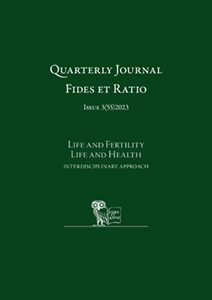Abstract
The aim of this study was to evaluate the relationship between being stressed in the work environment and different leisure activities, also whether specific temperamental characteristics compatible with Regulative Theory of Temperament by Strelau - emotional reactivity and activity – influence the connection between above mentioned variables in a major way. The study included 124 professionally active participants with age ranging from 18 through to 65 years old. It was conducted through paper-pencil method in stationary mode using three tools: Formal Characteristics of Behaviour – Temperament Questionnaire Revised Version, Subjective Work Assessment Questionnaire and Free Time Spending Questionnaire. Results showed that as the level of stress at work increases, relaxation and physical activity decreases, as well as activity, while emotional reactivity increases. At the same time, the higher the relaxation and physical activity, the higher level of activity and the lower emotional reactivity. Moreover, those two temperament traits can modify the relationship between leisure and workplace stress.
References
Aryanto, T, Tukinah, U., Hartarini, Y.M., Lubis, F.M. (2020). Connection of stress and job satisfaction to successful organizational stress management: a literature review. International Journal of Advanced Engineering Research and Science, 7(11), 217-225. https://doi.org/10.22161/ijaers.711.26
Bell, A.S., Rajendran, D., Theiler, S. (2012). Job Stress, wellbeing, work-life balance and work-life conflict among Australian Academics. E-Journal of Applied Psychology, 8(1), 25-37. https://doi.org/10.7790/ejap.v8i1.320
Brudek, P., Steuden, S., Ciuła, G. (2019). Mediacyjna rola stylów radzenia sobie ze stresem w związkach temperamentu i wypalenia zawodowego. Badania pielęgniarek psychiatrycznych. Psychiatria Polska, 53(5), 1151-1168. https://doi.org/10.12740/PP/OnlineFirst/99849
Brudek, P., Steuden, S., Furmanek, M., Ciuła, G. (2018). Cechy temperamentu i style radzenia sobie ze stresem jako predyktory wypalenia zawodowego u pielęgniarek psychiatrycznych. Annales Universitatis Mariae Curie-Skłodowska Lublin – Polonia, 31(2), 285-299. https://doi.org/10.17951/j.2018.31.2.285-299
Brunner, B., Igic, I., Keller, A.C., Wieser, S. (2019). Who gains most from improving working conditions? Health-related absenteeism and presenteeism due to stress at work. The European Journal of Health Economics, 20(8), 1165-1180. https://doi.org/10.1007/s10198-019-01084-9
Bull, F.C., Al-Ansari, S.S., Biddle, S., Borodulin, K., Buman, M.P., Cardon, G., Carty, C., Chaput, J.P., Chastin, S., Chou, R., Dempsey, P.C., DiPietro, L., Ekelund, U., Firth, J., Friedenreich, C.M., Garcia, L., Gichu, M., Jago, R., Katzmarzyk, P.T., Lambert, E., […] Willumsen, J.F. (2020). World Health Organization 2020 guidelines on physical activity and sedentary behaviour. British Journal of Sports Medicine, 54(24), 1451–1462. https://doi.org/10.1136/bjsports-2020-102955
Cyniak-Cieciura, M. (2021). Psychological flexibility, temperament, and perceived stress. Current Issues in Personality Psychology, 9(4), 306-315. https://doi.org/10.5114/cipp.2021.108685
Cyniak-Cieciura, M., Zawadzki, B. (2019). The relationship between temperament traits and post-traumatic stress disorder symptoms and its moderators: meta-analysis and meta-regression. Trauma, Violence & Abuse, 22(4), 702-716. https://doi.org/10.1177/1524838019876702
Cyniak-Cieciura, M., Zawadzki, B., Strelau, J. (2016). Formalna Charakterystyka Zachowania: Kwestionariusz Temperamentu: wersja zrewidowana. Warszawa: Pracownia Testów Psychologicznych PTP.
Czarnecki, D., Skalski D.W., Kreft, P, Kaszowska, M., Nikolenko, O. (2023). Aktywność fizyczna kobiet i mężczyzn w czasie wolnym od pracy. Rehabilitation and Recreation, 14, 151-157. https://doi.org/10.32782/2522-1795.2023.14.17
Dudek, B., Waszkowska, M., Hanke, W. (1999). Ochrona zdrowia pracowników przed skutkami stresu zawodowego. Łódź: Instytut Medycyny Pracy.
Engert, V., Liznz, R., Grant, J.A. (2019). Emodies stress: The physiological resonance of physiological stress. Psychoneuroendocrinology, 105, 138-146. https://doi.org/10.1016/j.psyneuen.2018.12.221
Hartono, M. (2022). Drawing hobby as a medium to manage stress and self-development. Journal of Visual Communication Design, 7(1), 43-52.
Heszen, I. (2020) Psychologia stresu. Korzystne i niekorzystne skutki stresu życiowego. Kraków: Wydawnictwo Naukowe PWN.
Lagunes-Córdoba E, Yoldi-Negrete M, Hewson T, Guízar-Sánchez D, Robles-García R, Tovilla-Zárate CA, Tracy D, Saracco-Alvarez RA and Fresán A (2022) A better way of life: The role of leisure activities on self-perceived health, perceived stress, confidence in stress management, and satisfaction with social support in psychiatrists and psychiatry trainees in Mexico. Frontiers in Psychiatry, 13:1052275. https://doi.org/10.3389/fpsyt.2022.1052275
Łukaszewski, B. (2020). Czas wolny Polaków w kontekście potencjału turystycznego. Zeszyty Naukowe. Turystyka i Rekreacja, 1(25), 139-157.
Miłaszewicz, D., Węgrzyn, G. (2018). Czas wolny i jego wykorzystanie a źródła dochodów – wybrane wyniki badań zasobu czasu wolnego studentów. Prace Naukowe Uniwersytetu Ekonomicznego we Wrocławiu, 529, 205-214. https://doi.org/10.15611/pn.2018.529.18
Rosak-Szyrocka, J. (2021). Aktywność fizyczna jako sposób radzenia sobie ze stresem zawodowym. Bezpieczeństwo Pracy – Nauka i Praktyka, 6(597), 4-8. https://doi.org/10.5604/01.3001.0014.9357
Różański, T. (2018). Czas wolny jako obszar pracy socjalnej. Praca Socjalna, 33(4), 109-125. https://doi.org/10.5604/01.3001.0012.9699
Šagát, P., Bartik, P., Lazić, A., Tohănean, D.I., Koronas, V., Turcu, I., Knjaz, D., Alexe, C.I., Curițianu, I.M. (2021). Self-Esteem, Individual versus Team Sports. International Journal of Environmental Research and Public Health, 18(24), 12915. https://doi.org/10.3390/ijerph182412915
Skalski, D., Nesterchuk, N., Skalska, E., Kindzer, B. (2021). Rekreacja ruchowa dla społeczeństwa – wybrane współczesne aspekty. https://doi.org/10.5281/zenodo.5510485
Slendak, J., Cewińśka, J. (2015). Rola aktywności sportowej w przeciwdziałaniu stresowi w służbie funkcjonariuszy Państwowej Straży Pożarnej. Zarządzanie Zasobami Ludzkimi, 5, 69-78.
Stasiak, A. (2022). Turystyka a jakość życia. (W:) P. Różycki (red.), Turystyka społeczna a jakość życia, 15-42. Kraków: Oficyna Wydawnicza “Wierchy”.
Waszkowska, M. (2009). Temperament a poczucie stresu w ruchu drogowym. Medycyna Pracy, 60(2), 137-144.
Yoo, J. (2022). Attitude toward leisure, satisfaction with leisure policy, and happiness are mediated by satisfaction with leisure activities, Scientific Reports, 12(1), 11723. https://doi.org/10.1038/s41598-022-16012-w

